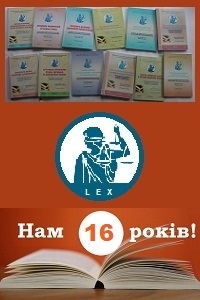Formation of a contract is a process that is carried out by using “offer” and “acceptance”. It involves the following steps: 1. identification of the correspondence; 2. identifying the relevant communication rule. The initial question that seeks to address is whether the offeror has made an offer. So firstly, it is basic to examine what is an “offer”. The other question that arises is if the offeree accepts the offer, that is to say, what is an acceptance. In other words, it is essential to determine whether the offer and acceptance have occurred.
Nowadays academic researches effort to advance understanding of how contract law should move forward in the light of digital technologies. Regarding the electronic means of communicating a distinction between contracts made on a website and contracts made exclusively by the exchange of email messages need to consider. Website and email-messages contracting raise the complex of questions: who makes the offer (in particular, retailer or customer for website contracting); when the contract is concluded (time of contracting); what is the place of contracting (particularly, in whose jurisdiction the contract is considered to be formed for cross-border contracts). It is necessary to take into account that the senders of the online messages often put it out of their control by pressing the “send message” key. That is one of the reasons, why the scholars currently argue about application of traditional contract law approaches to internet contracting.
An offer is an expression of willingness to contract on the specified terms without further negotiation, so that it requires only acceptance for a binding agreement to be formed. There are no offers to the public. An offer is made to a specific person or persons. An offer should be distinguished from other statements made in the progress of negotiations for getting agreement so-called “invitations to treat”. On many occasions, they are easily distinguished. An offer is capable of immediate translation into a contract by the fact of acceptance. The definition of an invitation to treat is restricted to statements indicating the party’s willingness to receive an offer. The courts look to the individual facts of each case in making the distinction.
In order to constitute an offer, the communication must be both: 1. sufficiently specific in terms of the main obligation and to be capable of immediate acceptance; 2. made with an intention to be bound by the mere fact of acceptance. The intention to be bound by the mere fact of acceptance is determined objectively. It amounts to examining the language used in correspondence between the parties. The context in which the communication is made affects whether it is interpreted as an offer or an invitation to treat. Case law has established that there are some recognized instances when a particular communication is likely to be regarded either as an offer, or as an invitation to treat. The main rule: advertisements, brochures, and price lists amount to invitations to treat. There is an exception from this rule. In cases when the advertisement requests performance of an act it is viewed as an offer, assuming that the language of advertisement is sufficiently definite in its terms and leaves nothing open for negotiation. The performance of the act that has been pointed in advertisement is in itself an acceptance of such an offer by conduct and so establishes agreement. It is like that in case of unilateral contracts. In the case of bilateral contracts, the offer can be accepted by making a promise in exchange for a promise and although on the time of exchange of such promises each party is bound, the performance will occur later. The legal consequences arise from making a response promise to the initial one. This is the position in the case of simple sale of goods contracts. The distinction therefore is contained in the question whether it is possible to accept by promising to perform (bilateral) or whether it is only possible to accept by performing the requested act (unilateral).
Websites like the electronic equivalent of displays, advertisements, or catalogues of products for sale would seem to be viewed in English contract law as an invitation to treat. Because the website’s operator retains freedom to contract as the offer comes from the customer. The customers make offers to buy presumably at the checkout stage when the relevant instruction is clicked to process the order and the website’s operator can manage its stock that may be limited and will not find itself bound to supply all those online buyers who seek to place orders. There is the same approach in European contract law. The provisions of DCFR II- 3:105 (1) and CESL art. 24 (3) prescribe that the final say on steps to electronic contract formation is likely to rest with the retailer which is placed under the duty to provide details of the process. Although the provision of DCFR II-4:201 (3) contains another rule suggesting that a display of goods is to be treated as an offer to supply until the stock of goods is exhausted.
The particular step in the process of contract formation is identifying the relevant communication rule. An offer take effect at the moment when is communicated to the offeree and is possible for the offeree to accept if the offeree had knowledge of the offer. In this connection it is a first question of relevance what is the communication. For example, what would the position be if the offer-email was delivered to the offeree but was not immediately opened. The international contract law acts are unanimous establishing “the receipt rule” for offers and defines “receipt” as occurring when an offer is delivered to the offeree’s mailing address (art. 15.1 Vienna Convention for International Sale of Goods 1980, art. 1.10 UNIDROIT, art. 1:303 PECL, and DCFR I-1:109 (4)). Therefore, “the receipt rule” means that the communication shouldn’t actually have been read by the person to whom it is addressed. The CESL also defines “receipt” as a “notice”, that is considered to be received when is transmitted by email (art. 10 (4)). Taking into account theese provisions the question of relevance remain whether the person to whom the offer is addressed, offeree, had knowledge of it that is to say having read offer. It would not be possible to accept without offeree’s knowledge of the offer terms.
The acceptance ought to be made in response to the offer as the agreement is achieved when the offer and acceptance have occurred. So, the principle that the acceptance needs to be communicated to the offeror is established in English contract law. For paper contracts “the postal rule” is applied to communication of the acceptance. It means the contract is formed at the moment when the letter of acceptance is sent, without need for it to reach the offeror. “The postal rule” therefore places the risk of loss or delay on the offeror since it follows that the offeror will be bound by a contract despite the non-receipt of an acceptance sent by post. The post is a method of non-instantaneous communication. In case of instantaneous communication (telephone negotiation, telex, fax messages) acceptance takes effect on receipt (“the receipt rule”) and the time of contracting is determined by this moment.
Website contracting is instantaneous so that “the receipt rule” should apply. The online buyer (customer) makes an offer while clicking on “send order” button. The confirmation of the “online-order” by the website’s operator is not intended to constitute an acceptance. The retailer’s acceptance is usually delayed until the dispatch of the goods (“the dispatch rule”). In website contracting the order and the confirmation of receipt of order is deemed to be received when the parties to whom they are addressed respectively are able to access them. In online (Internet) context the receipt of the message occurs when it has been downloaded from the server and is therefore capable of being accessed by the addressee. The receipt principle is equally the position where the parties are conducting the matter by email.
|









